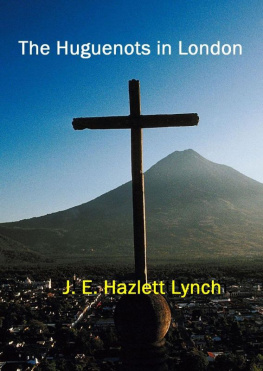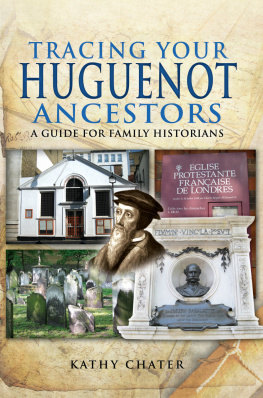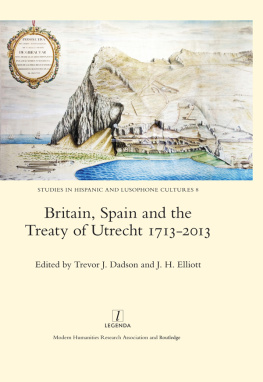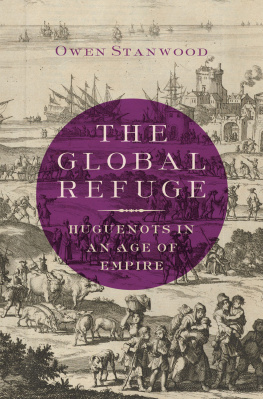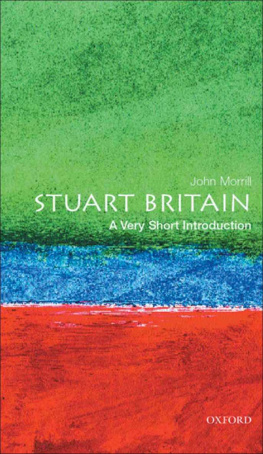
The Huguenots in Later Stuart Britain is planned as one work to be published in three interlinking volumes (titles/publication dates detailed on the following page). It examines the history of the French communities in Britain from the Civil War, which plunged them into turmoil, to the Treaty of Utrecht in 1713, after which there was no realistic possibility that the Huguenots would be readmitted to France. There is a particular focus on the decades of the 1680s and 1690s, at once the most complex, the most crucial, and the most challenging alike for the refugees themselves and for subsequent historians.
The work opens with the Calvinist French-speaking communities in England caught up in the Civil War. They could not avoid it, with many of their members largely assimilated into English society by the 1640s. Generally they favoured the Parliamentarian side, but any victory was pyrrhic because the Interregnum supported the rights of Independent congregations which undermined their whole Calvinist structure. Weakened by in-fighting, in the 1660s the old-established French churches then had to reassert their right to exist in the face of a sometimes hostile restored monarchy and episcopacy, a newly licenced French church emphasizing its Anglicanism and its loyalty to the crown, and the challenges of the Plague and the Fire of London which burnt the largest French church in England to the ground. They were still staggering to find their feet when the first trickle and then the full flood of new Huguenot immigration overwhelmed them.
As for the newly arriving Huguenot ministers, not prepared for the England to which they came, they found they had to resolve what was often an intense personal dilemma: should they stand fast for the worship they had led in France, or accept Anglican ways? and if they did accept Anglicanism, to what extent? It is demonstrated that many ministers took the Anglican route, although Volume II will show that the French communities as a whole, old and new alike, voted with their feet not to do so. A substantial appendix provides a biographical account of over 600 ministers in the orbit of the French churches across this period.
Robin Gwynn is a historian of Early Modern England, formerly Reader in History at Massey University, New Zealand. His speciality has long been the study of Huguenot refugees and the French communities in Britain, and in 1985 he was Director of the Huguenot Heritage tercentenary commemoration under the patronage of H.M. The Queen. His books include the widely acclaimed Huguenot Heritage (2nd edn, Sussex Academic Press, 2001), and editions of later seventeenth century letters and consistory minutes of the largest of the many French churches in England.
The Huguenots in Later Stuart Britain
V OLUME I
Crisis, Renewal, and the Ministers Dilemma
HARDBACK 978-1-84519-618-9 (2015)
V OLUME II
Settlement, Churches, and the Role of London
HARDBACK 978-1-84519-619-6 (2017)
V OLUME III
The Huguenots and the Defeat of Louis XIVs France
HARDBACK 978-1-84519-620-2 (2020)

Copyright Robin Gwynn, 2015.
Published in the Sussex Academic e-Library, 2015.
SUSSEX ACADEMIC PRESS
PO Box 139
Eastbourne BN24 9BP, UK
and simultaneously in the United States of America and Canada
All rights reserved. Except for the quotation of short passages for the purposes of criticism and review, no part of this publication may be reproduced, stored in a retrieval system or transmitted in any form or by any means, electronic, mechanical, photocopying, recording or otherwise, without the prior permission of the publisher.
British Library Cataloguing in Publication Data
A CIP catalogue record for this book is available from the British Library.
Library of Congress Cataloging-in-Publication Data
Gwynn, Robin D.
The Huguenots in later Stuart Britain / Robin Gwynn.
volumes cm
Includes bibliographical references and index.
Contents: v. 1. Crisis, renewal, and the ministers dilemma v. 2. Settlement, churches, and the role of London v. 3. The Huguenots and the defeat of Louis XIVs France.
ISBN 978-1-84519-618-9 (v. 1: hbk : alk. paper)
ISBN 978-1-78284-217-0 (e-pub)
ISBN 978-1-78284-218-7 (e-mobi)
ISBN 978-1-78284-219-4 (e-pdf)
1. HuguenotsGreat BritainHistory. 2. Great BritainHistoryStuarts, 16031714. I. Title.
DA125.H84G88 2015
305.6845094109032dc23
2014046821
This e-book text has been prepared for electronic viewing. Some features, including tables and figures, might not display as in the print version, due to electronic conversion limitations and/or copyright strictures.
List of Tables, Figures and Illustrations
Tables and Figures
Illustrations
The cover illustration
To convey the experience of the Huguenot refugees, the cover highlights the cross which came to symbolize what they stood for. The Huguenot cross presents their Calvinist Christianity. It is the croix boutonn of Languedoc; most representations of the cross show its spokes separated by fleur-de-lis, depicting France. The dove stands for the Holy Spirit descending from God to man, but can also serve as an allusion to the flight of the refugees. The dislocation which defined the refugees situation and the uncertainty of their prospects is captured in Jan Luykens contemporary depiction (1696) of Huguenots fleeing France around the time of the Revocation of the Edict of Nantes.
The plate section (after )
Preface
This work has been long in the making. It was fifty years ago, while I was doing a postgraduate teacher training course at Cambridge, that I chanced to meet Prof. David Joslin, who had tutored me at Pembroke College during my undergraduate career. How is your doctorate progressing?, he asked. I had to explain that I was not doing any such degree, but the result of the conversation was that in 1965 I enrolled for a Ph.D. at University College, London, where the Huguenot Society library was located. Since then, the history of the Huguenots in Britain has never ceased to be part of my life.
Although neither of Huguenot descent nor a Calvinist, I already knew a little about the subject, because it was an academic interest of my mother, Grace Gwynn, ne Lee. While a student at Trinity College, Dublin, she had been encouraged to study the Huguenots in Ireland for a post-graduate degree, and she went on to produce The Huguenot Settlements in Ireland (Longmans, 1936). By the early 1960s, she had become the first official researcher for the Huguenot Society in London, and was writing a book on the Bosanquet family; she died very shortly before my own undergraduate examinations, and my father and I indexed The Story of the Bosanquets after her death.
Had my mother lived, she would surely have written a history of the Huguenots in England. My own initial inspiration was less my doctorate than the intent to write the book she might have attempted if given the time. Without that broad aim, and the willingness of my father to support me financially, it is unlikely that I could have made a great deal of progress, because the state of scholarship in England on the Huguenots left much to be desired in the 1960s. I quickly discovered that there was no firm ground on which to build. There had been seriously good academic work done on the refugees of the sixteenth and seventeenth centuries, but it tended to come to a grinding halt in the decade of the 1680s, just as the main Huguenot influx was arriving in Britain. Professional English historians had only the haziest idea of the scale of immigration; some, for example, assumed that there was only one French church in London whereas by 1690 there were many, and so made all sorts of errors in consequence.


